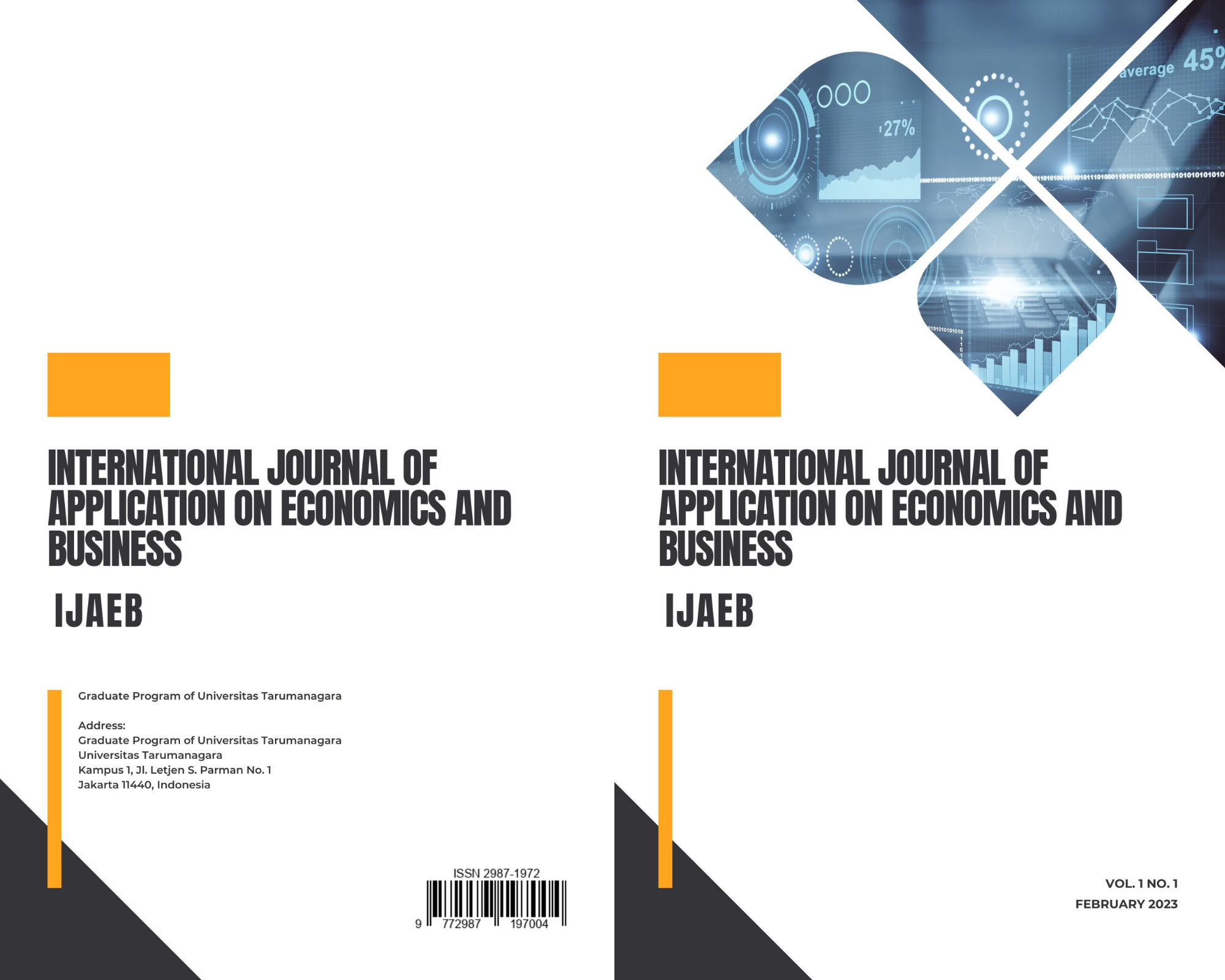The Role of Perceived Fit, Attitude, and Need for Uniqueness on Intention to Purchase Co-Branded Product in Indonesia
Main Article Content
Abstract
This research was conducted to empirically examine the role of perceived fit, attitude, and need for uniqueness to increase intention to purchase co-branded product in Jakarta. A total of 202 respondents were collected with non-probability convenience sampling technique, but only 150 data were usable as samples. An online questionnaire was distributed using Google Form with 5-point Likert scale for each indicator. All data were analyzed using PLS-SEM method. The results showed that perceived fit does not positively and significantly impact intention to purchase co-branded product. In addition, attitude and need for uniqueness can positively and significantly impact intention to purchase co-branded product. The results of this study contribute to get a better understanding of co-branding and to help the marketers formulate better co-branding strategies.
Article Details

This work is licensed under a Creative Commons Attribution-NonCommercial-ShareAlike 4.0 International License.
This journal provides immediate open access to its content on the principle that making research freely available to the public supports a greater global exchange of knowledge.
IJAEB by Graduate Program of Universitas Tarumanagara is licensed under a Creative Commons Attribution-NonCommercial-ShareAlike 4.0 International License.. Permissions beyond the scope of this license may be available at https://journal.untar.ac.id/index.php/ijaeb
References
H.Y. Yu, G.M. Robinson, D.H. Lee, To partner or not? A study of co-branding partnership and consumers’ perception of symbolism and functionality toward co-branded sport products, in: International Journal of Sports Marketing and Sponsorship, vol. 22, 2020, pp. 677-698. DOI: 10.1108/IJSMS-02-2020-0018
D.C. Lee, C. Kroncke, J.E. Johnson, Consumer evaluation of brand fit, attitude, and purchase intention of athletic team merchandise, in: International Journal Sport Management and Marketing, vol. 11, 2012, pp. 158-171. DOI: 10.1504/IJSMM.2012.047134
V. Morwitz, Consumers' Purchase Intentions and their Behavior", Foundations and Trends® in Marketing, vol. 7, 2012, pp. 181-230. DOI: 10.1561/1700000036
A.M. Hélène, M. Kumar, B. Christophe, Determinants of cause co-branding success: a study of consumers’ attitudes in banking sector, in: Banks and Banks Systems, vol. 7, 2012
M. Mazodier, D. Merunka, Beyond Brand Attitude: Individual Drivers of Purchase for Symbolic Cobranded Products, in: Journal of Business Research, vol. 67, 2014, pp. 1552-1558. DOI: 10.1016/j.jbusres.2014.01.015
N. Xiao, S.H. Lee, Brand identity fit in co-branding: The moderating role of C-B identification and consumer coping, in: European Journal of Marketing, vol. 48, 2014, pp. 1239-1254. DOI: 10.1108/EJM-02-2012-0075
K. Charry, N.T.M. Demoulin, Children’s response to co-branded products: the facilitating role of fit, in: International Journal of Retail & Distribution Management, vol. 42, 2014, pp. 1032-1052. DOI: 10.1108/IJRDM-08-2013-0166
C.Q.Y. Soh, S. Rezaei, M.L. Gu, A structural model of the antecedents and consequences of Generation Y luxury fashion goods purchase decisions, in: Young Consumers, vol. 18, 2017, pp. 180-204. DOI: 10.1108/YC-12-2016-00654
D.A. Aaker, K.L. Keller, Consumer Evaluations of Brand Extensions, in: Journal of Marketing, vol. 54, 1990, pp. 27–41. DOI: 10.2307/1252171
B. Helmig, J.A. Huber, P.S.H. Leeflang, Co-branding: The State of the Art, in: Schmalenbach Bus Rev, vol. 60, 2008, pp. 359–377. DOI: 10.1007/BF03396775
M. Fishbein, I. Ajzen, Beliefs, Attitudes, Intentions and Behavior: An Introduction to Theory and Research, 1975
N. Spears, S.N. Singh, Measuring Attitude toward the Brand and Purchase Intentions, in: Journal of Current Issues & Research in Advertising, vol. 26, 2004, pp. 53-66, DOI: 10.1080/10641734.2004.10505164
K.T. Tian, W.O. Bearden, D.L. Hunter, Consumer’s need for uniqueness: scale development and validation, in: Journal of Consumer Research, vol. 28, 2001, pp. 50-66.
C. Fandos, C. Flavián, Intrinsic and extrinsic quality attributes, loyalty and buying intention: an analysis for a PDO product, in: British Food Journal, vol. 108, 2006, pp. 646-662. DOI: 10.1108/00070700610682337
P. Kotler, K.L. Keller, Marketing Management, in: Pearson Education Inc, New Jersey, 2012
A.S. Ashton, N. Scott, Hotel restaurant co-branding: The relationship of perceived brand fit with intention to purchase, in: Journal of Vacation Marketing, vol. 17, 2011, pp. 275-285. DOI: 10.1177/1356766711420838
D. Papadimitriou, A. Apostolopoulou, I. Loukas, The role of perceived fit in fans’ evaluation of sports brand extensions, in: International Journal of Sports Marketing & Sponsorship, vol. 6, 2004, pp. 27-44. DOI: 10.1108/IJSMS-06-01-2004-B006
L. Tan, Keni, Prediksi E-Wom dan Subjective Norm terhadap Purchase Intention: Brand Attitude Sebagai Variabel Mediasi, in: Jurnal Manajerial dan Kewirausahaan, Vol. 2, 2020, pp. 765-774. http://dx.doi.org/10.24912/jmk.v2i3.9590
M.T, Liu, R. Chu, I.A. Wong, M.A. Zúñiga, Y. Meng,, C. Pang, Exploring the relationship among affective loyalty, perceived benefits, attitude, and intention to use co-branded products, in: Asia Pacific Journal of Marketing and Logistics, vol. 24, 2014, pp. 561-582. DOI: 10.1108/13555851211259025
S. Bhat, S.K. Reddy, The impact of parent brand attribute associations and effect on brand extension evaluation, in: Journal of Business Research, vol. 53, 2001, pp. 111-122. DOI: 10.1016/S0148-2963(99)00115-0
J.F. Hair, J.J. Risher, M. Sarstedt, C.M. Ringle. When to use and how to report the results of PLS-SEM, in: European Business Review, vol: 31, 2019, pp. 2-24. DOI: 10.1108/EBR-11-2018-0203
U. Sekaran, R. Bougie, Research methods for business: a skill-building approach. In: John Wiley & Sons, United Kingdom, 2016
D. Papadimitriou, K.K. Kaplanidou, N. Papacharalampous, Sport event-sponsor fit and its effects on sponsor purchase intentions: a non-consumer perspective among athletes volunteers and spectators, in: Journal of Business & Industrial Marketing, vol. 31, 2016, pp. 247–259. DOI: 10.1108/JBIM-09-2014-0187
B. Shen, J. Jung, P-S. Chow, S. Wong, Co-Branding in Fast Fashion: The Impact of Consumers’ Need for Uniqueness on Purchase Perception, in: Fashion Branding and Consumer Behaviors, 2014. DOI 10.1007/978-1-4939-0277-4_7



